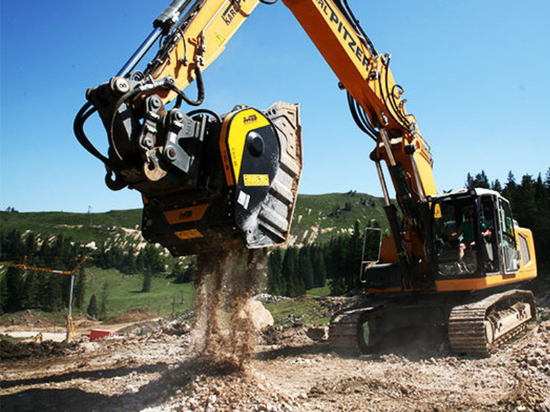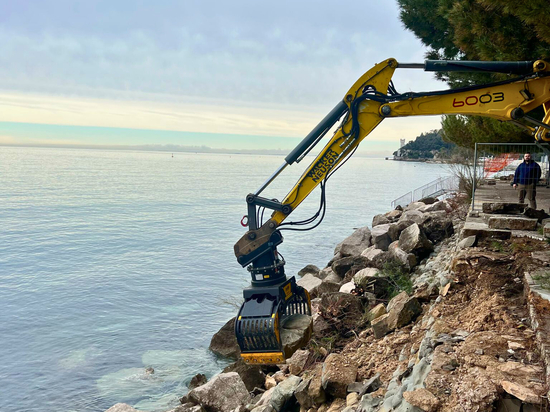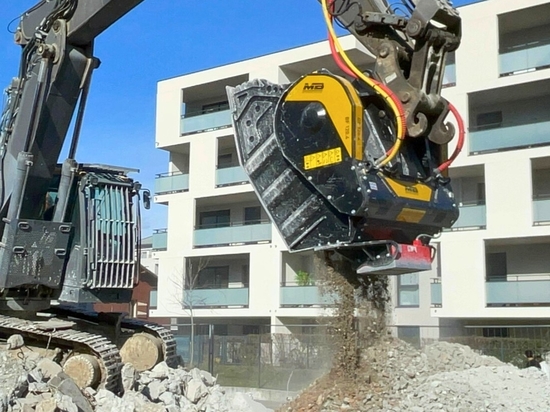
#Industry News
The world needs topsoil
How to recover and reuse most of the soil on different construction sites.
The world could run out of topsoil - in about 60 years if we continue to degrade it at the current rate.
In the European Parliament, the first steps for preservation have been taken with the approval of the Nature Restoration Law (NRL), a Regulation that provides for the restoration of at least 30% of natural habitats, and the increase of urban green spaces by 2030.
What impact do construction sites have in preserving the soil?
Removing the topsoil to allow for infrastructure construction is standard practice. Excavated earth is usually classified as waste, but it ceases to be waste if it is fully recovered. Recycling and reusing the soil becomes essential both to save the money of disposal and a possible repurchase of new material and because it avoids contaminating the soil with materials from other areas.
With MB Crusher equipment installed on the heavy machine already present on site, material management becomes easier and more sustainable, economically and in terms of time.
Invasive weeds leave Versailles
At the western end of the Château de Versailles, France, right on the edge of the Gally Gardens, a 10-ton Mecalac excavator works in the materials storage depot. An MB-S10 screening bucket is installed at the end of its boom. "We needed to sift the excavated material to gather soil and compost to arrange the flower beds and lawns of the Gardens – says Joël Fauvel, Deputy Director of the Department of Gardens of Trianon and Marly - Before our gardeners had to manually load the excavated soil on a mechanical sieve mounted on a frame. Now with the MB Crusher screening bucket, separating the materials is much easier and faster".
The most important thing – continues Fauvel – is that the soil processed with the MB screener has a better quality as it contains fewer weed roots and purity is essential to be able to reuse it. now the soil that returns to the ground is much cleaner.
Going back to where you came from
There are as many as 15 kilometres of excavations to be filled during the installation of aqueducts and sewage networks in a small Peruvian community – El Porvenir. Bedding with the same excavated material is a gain for the construction site but above all for the environment. A difficult task during the rainy season as the excavated material is wet. The problem was solved by installing an MB Crusher MB-HDS212 padding bucket on the Bobcat mini-excavator already on site. The advantages: no need to buy filling materials, no truck trips to and from the construction site, and the extracted soil returns – clean - to its place.
Everything is locally sourced
During excavation work, the soil is often mixed with branches, stones, roots and other "contaminating" materials. Why send everything to a landfill when with the MB-HDS padding bucket you can easily and quickly separate impurities from the earth and then reuse the soil? In Germany, a construction site had precisely this problem: the nearest landfill to which it could take the removed soil was about 35 kilometres away, and this meant an increase in time and costs. The problem was solved by using an MB-HDS207 sorting bucket to screen the material and separate the soil from the stones and roots.
https://vimeo.com/924957920
The environment is something that works like an organism: a single local intervention has consequences for the entire system. If this balance is broken, the entire system risks being destroyed.
What help can you give? Simply treat the excavated earth with the MB Crusher equipment to obtain "clean" soil, facilitate on-site operations and contribute to environmental protection. And to do it, all you have to do is use the heavy machines already at the site.







